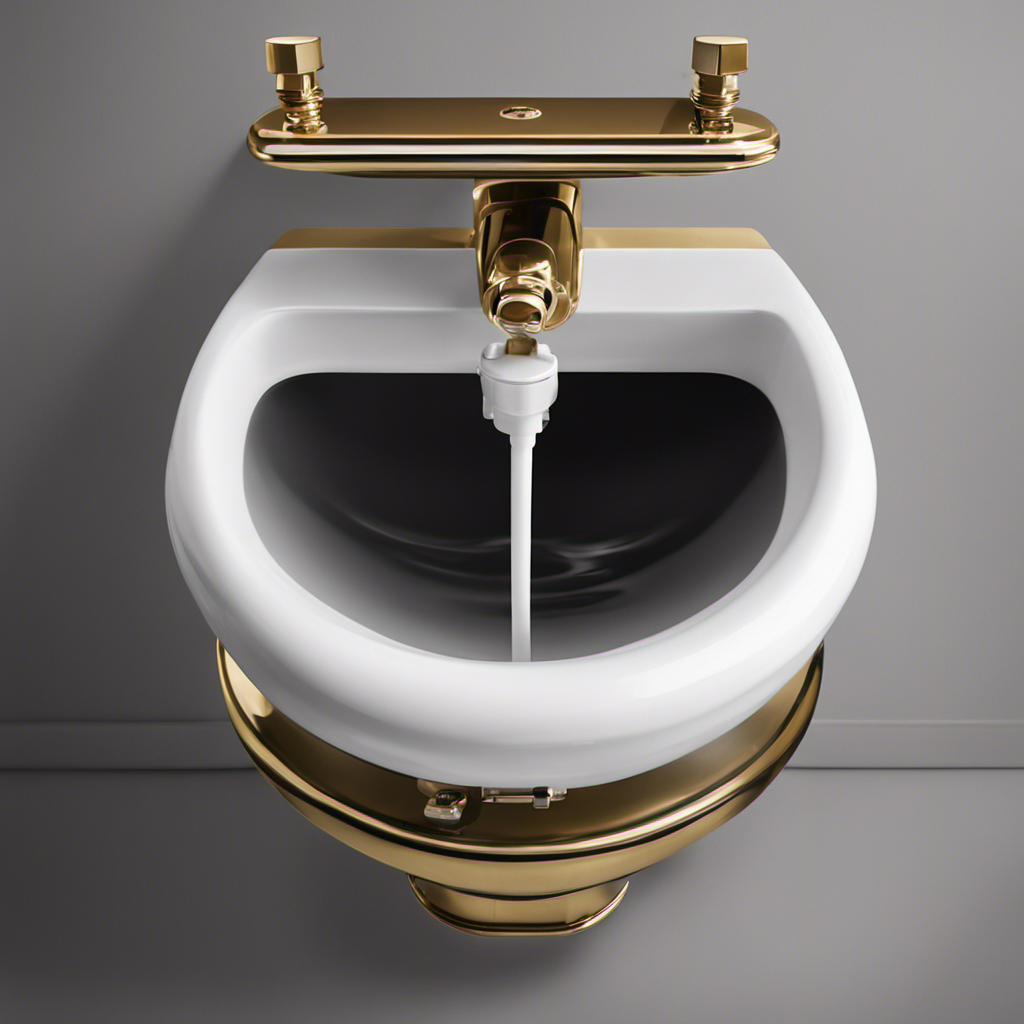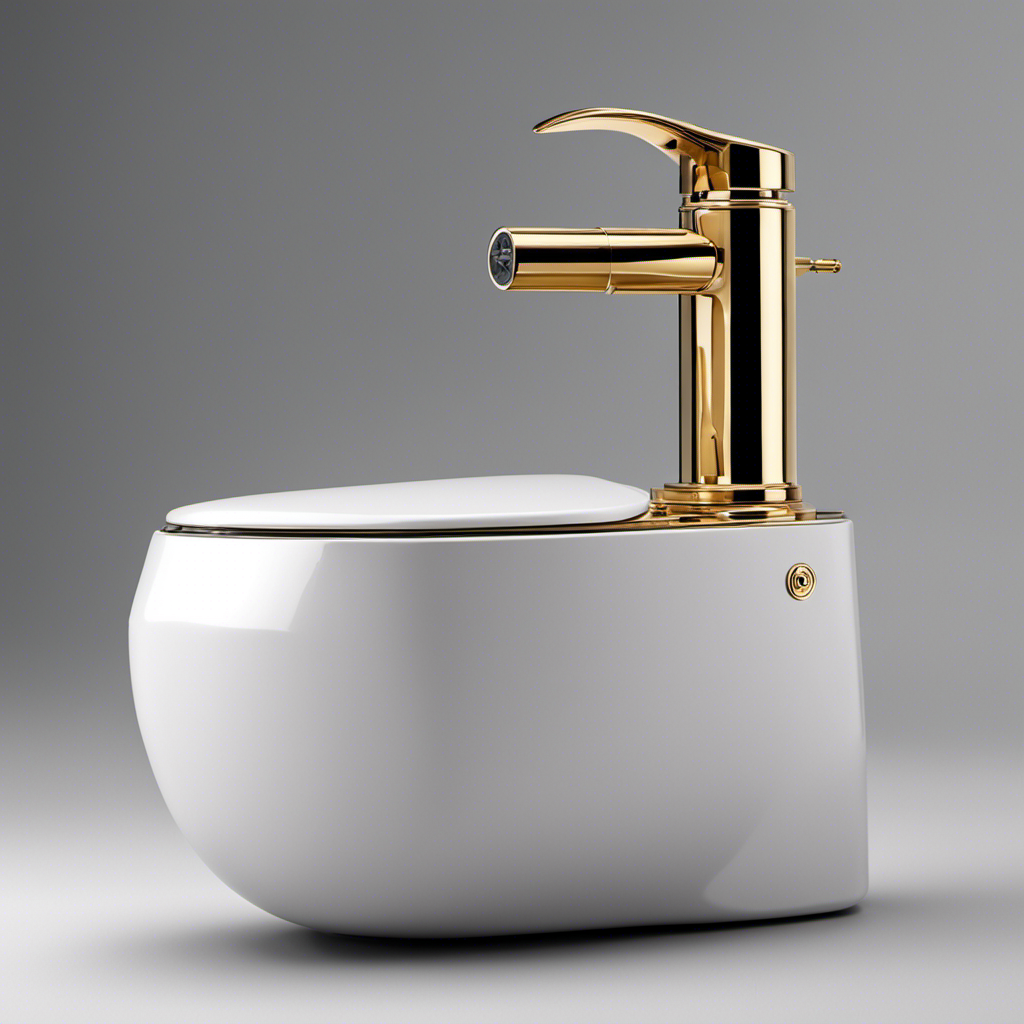As a seasoned DIY enthusiast, I’ve encountered my fair share of household mishaps. One of the most common and frustrating ones is a leaking toilet tank. The incessant drip-drip-drip can drive anyone up the wall.
But fear not, for I am here to guide you through the process of fixing that pesky leak. In this article, I will walk you through the steps to:
- Identify the source of the leak
- Shut off the water supply
- Inspect and replace the flapper
- Fix any leaky tank bolts and gaskets
By the end, your toilet tank will be leak-free and functioning flawlessly once again. Let’s dive in!
Key Takeaways
- Identify the source of the leak by checking the water level, inspecting the flapper valve, examining the fill valve and supply line, and examining the tank and flush valve.
- Shut off the water supply near the base of the toilet to prevent further water damage and address the issue promptly.
- Inspect and replace the flapper by shutting off the water supply, removing the tank lid, locating the flapper at the bottom of the tank, and disconnecting the chain to attach a new one.
- Fix leaky tank bolts and gaskets by turning off the water supply, inspecting and tightening loose tank bolts, and replacing cracked or worn gaskets between the tank and the bowl.
Identifying the Source of the Leak
First, you’ll need to figure out where the leak is coming from in your toilet tank. Diagnosing toilet leaks can be a bit tricky, but with some troubleshooting, you can identify the source of the problem.
Start by checking the water level in the tank. If it’s too high, it could be causing water to overflow and leak out.
Next, inspect the flapper valve. This rubber seal can become worn or misaligned, leading to water leakage.
Additionally, check the fill valve and supply line for any signs of damage or loose connections.
A cracked tank or faulty flush valve can also be the culprit. By carefully examining these components, you can pinpoint the cause of the water leakage and take steps to fix it.
Shutting Off the Water Supply
To stop the water flow, you’ll want to turn off the shut-off valve located near the base of the toilet. This valve is usually a small lever or knob that you can easily turn clockwise to shut off the water supply.
By doing this, you can prevent further water damage and begin the process of repairing the leak. It’s important to address the issue promptly to avoid any potential damage to your bathroom or surrounding areas.
Once the water supply is shut off, you can then proceed to assess and fix the leak. Remember, regular maintenance and inspections are crucial for preventing future leaks and minimizing the risk of water damage.
Inspecting and Replacing the Flapper
Once you’ve shut off the water supply, you can inspect and replace the flapper to address any potential leaks.
The flapper is a rubber valve that controls the flow of water from the tank to the bowl. Over time, it can become worn or warped, leading to leaks.
Start by removing the tank lid and flushing the toilet to drain the water. Next, locate the flapper at the bottom of the tank. Check for any signs of damage, such as cracks or tears.
If the flapper is faulty, you can easily replace it by disconnecting the chain and removing the old flapper. Then, attach the new flapper and reconnect the chain. This simple fix should resolve most common leaking issues.
Now, let’s move on to fixing leaky tank bolts and gaskets.
Fixing Leaky Tank Bolts and Gaskets
In order to address the issue of leaky tank bolts and gaskets, it’s important to first turn off the water supply. Leaky tank bolts and gaskets can cause water to drip or even pour out from the tank onto the floor.
To fix this problem, start by inspecting the tank bolts. These bolts secure the tank to the bowl and can become loose over time. Using a wrench, tighten any loose connections by turning the bolts clockwise.
Next, check the gaskets between the tank and the bowl. If you notice any cracks or wear, it’s time to replace them. Simply remove the old gaskets and insert new ones, making sure they are properly aligned.
Tighten the bolts again and turn on the water supply to test for leaks.
Testing for Leaks and Ensuring Proper Functioning
Make sure to check for any leaks and ensure that the toilet is functioning properly.
To begin, check the water pressure by turning off the water supply valve and flushing the toilet to empty the tank. With the tank empty, turn the water supply back on and observe the water filling the tank. The water should flow steadily and without any sputtering or fluctuations in pressure.
If the water pressure is too low, it may indicate a problem with the water supply line or the fill valve. In this case, adjusting the fill valve may help. Locate the fill valve and turn the adjustment screw clockwise to increase the water level in the tank. Test the toilet again to see if the water pressure has improved.
Frequently Asked Questions
Can I Use Any Type of Sealant to Fix a Leaking Toilet Tank?
I wouldn’t recommend using just any type of sealant to fix a leaking toilet tank. It’s important to use the right sealant specifically designed for plumbing repairs to ensure a proper and long-lasting fix.
How Long Does It Typically Take to Replace a Flapper in a Toilet Tank?
Replacing a flapper in a toilet tank typically takes around 10-15 minutes. To do so, first, turn off the water supply, remove the old flapper, and install the new one. Troubleshooting common issues with toilet tank flappers is crucial for proper functionality.
Can I Fix a Leaking Toilet Tank Without Having to Shut off the Water Supply?
Yes, you can fix a leaking toilet tank without shutting off the water supply. One alternative solution is to use a temporary patch, like a rubber band or epoxy putty, but there are potential risks involved.
What Are the Signs That Indicate a Problem With Tank Bolts and Gaskets?
Signs of faulty tank bolts and gaskets include water pooling around the base of the toilet, a constantly running toilet, and a loose or wobbly toilet tank. Regular maintenance is crucial to prevent leaks and ensure proper functioning.
Are There Any Specific Tools Required to Test for Leaks and Ensure Proper Functioning of a Toilet Tank?
To ensure a leak-free toilet tank, specific tools are needed. By testing for leaks and ensuring proper functioning, we can prevent the dreaded toilet tank leak and keep our bathrooms dry.
Conclusion
In conclusion, fixing a leaking toilet tank doesn’t have to be a daunting task. By following the steps outlined in this article, you can easily identify the source of the leak and shut off the water supply.
Next, inspect and replace the flapper if necessary. This small rubber piece is often the culprit behind a leaking toilet tank.
Additionally, check for any issues with tank bolts and gaskets. These can become loose or worn out over time, causing leaks.
Finally, ensure proper functioning by turning the water supply back on and checking for any remaining leaks.
Remember, tackling this problem head-on will ultimately save you time, money, and the embarrassment of a potential ‘waterworks’ situation. So go ahead, grab your wrench, and get ready to conquer that leaky toilet tank like a pro!










